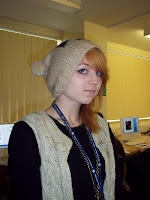Audiences are grouped according to what they do with the media e.g an active audience.
There are 4 types:
-Those who reinforce their personal identity by comparing their own role with similar media roles
-Those with a need for companionship
-Those with a need to be informed
-Those with a need to be entertained
Stuart Hall and David Morley came up with the Encoding/Decoding Model. This is the idea that audience vary in response to media messages because of social position, gender, age, ethnicity, occupation, experience and beliefs. It is encoded to present preferred reading.
There are 3 kinds of response:
-Dominant: Audience agree with dominant values..
- Negotiated: Generally agree with dominant values expressed but may disagree with certain aspects according to their social background.
- Oppositional: The audience disagree with dominant values expressed within the preferred reading.
The Hypodermic Syringe Model concludes that the media are powerful agents of influence and a capable of 'injecting' ideas and behaviours. Children and teenagers are considered susceptible to this.
Monday, 18 October 2010
Thursday, 14 October 2010
Demographic.
Media production involves the key concept of audience consumption, profiling gives us a clear sense at who a magazine is aimed at.
This can be defined in a number of different ways e.g:
Demographic - Age, gender, class and location.
or
The JICNAR (Joint Industry Committee for National Readership Survey) scale. This scale defines social class by occupation:
Grade A - Upper middle-class - High managerial, administrative or professional, such as a barrister.
Grade B - Middle-class - Intermediate managerial, administrative or professional such as a bank manager.
Grade C1 - Lower middle-class - Supervisory or clerical, managerial, administrative or professional - dubbed 'white collar workers'.
Grade C2 - Skilled working class - Skilled manual workers, dubbed as 'blue collar workers', such as a mechanic.
Grade D - Working class - Semi-and unskilled manual workers such as those who work on an assembly line.
Group E - Unskilled - Casual workers or those who are dependent on state benefits such as state pensioners or widows.
or
Psycho-graphic - Measured in terms of hopes/aspirations/needs or desires e.g. aspire to a richer life-style or make the world a better place.
Often refers to stereotypes e.g. As a 17-yr old student I would be referred to as the youth audience.
This can be defined in a number of different ways e.g:
Demographic - Age, gender, class and location.
or
The JICNAR (Joint Industry Committee for National Readership Survey) scale. This scale defines social class by occupation:
Grade A - Upper middle-class - High managerial, administrative or professional, such as a barrister.
Grade B - Middle-class - Intermediate managerial, administrative or professional such as a bank manager.
Grade C1 - Lower middle-class - Supervisory or clerical, managerial, administrative or professional - dubbed 'white collar workers'.
Grade C2 - Skilled working class - Skilled manual workers, dubbed as 'blue collar workers', such as a mechanic.
Grade D - Working class - Semi-and unskilled manual workers such as those who work on an assembly line.
Group E - Unskilled - Casual workers or those who are dependent on state benefits such as state pensioners or widows.
or
Psycho-graphic - Measured in terms of hopes/aspirations/needs or desires e.g. aspire to a richer life-style or make the world a better place.
Often refers to stereotypes e.g. As a 17-yr old student I would be referred to as the youth audience.
Tuesday, 12 October 2010
College Magazine - Front Covers
I have started to sort through which of the photos I shall use in my college magazine. I narrowed it down to two possible front covers and started a little editing for each of them:
Wednesday, 6 October 2010
College magazine photographs.
I have now began to research and bring together ideas for my college magazine. I took some photographs which I can consider using for the front cover and contents page.
Subscribe to:
Posts (Atom)





















































